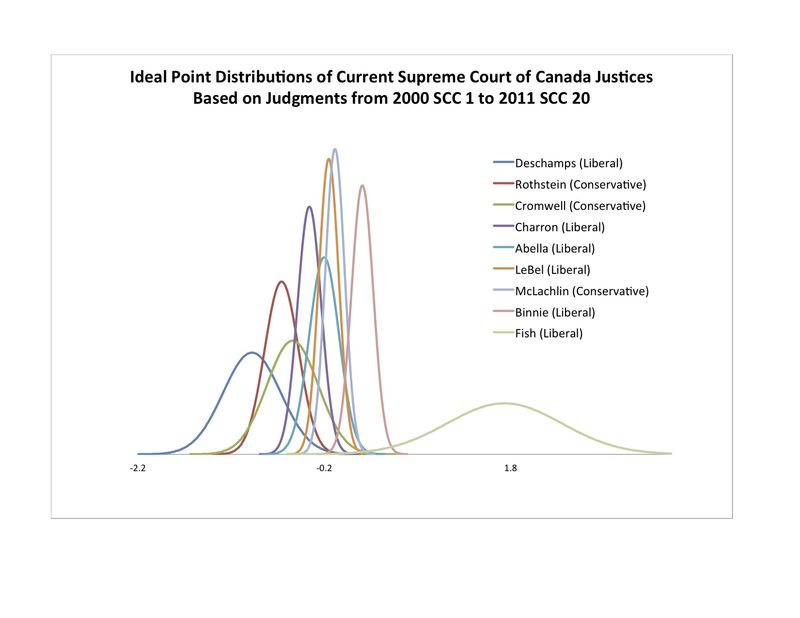Justices Binnie and Charron announced on Friday, May 13, 2011 that they would be retiring from the Supreme Court of Canada. In order to better understand the likely effects of this on the implicit policy preferences of the members of the Court, I analyzed all the judgments of the Supreme Court of Canada under Chief Justice McLachlin from 2000 SCC 1 to 2011 SCC 20 using the method of Martin and Quinn (2002) that Andrew Green and I have used extensively in earlier work (see here, here, and here).
The updated estimates of the position of the justices in a linear policy space is illustrated below. With the exception of Justices Fish (more liberal) and Deschamps, Rothstein, and Cromwell (more conservative), the justices are tightly bunched in the middle. The current estimates suggest that Justice Abella is the median justice given the current composition of the Court, with an ideal point of -0.05.

If Prime Minister Harper chooses to replace Justices Charron (ideal point of -0.21) and Binnie (ideal point of 0.36) with justices that are more or less consistent with his previous two appointees, Justices Rothstein (ideal point of -0.51) and Cromwell (ideal point of -0.39), then it is likely that the new median justice on the Court will be Justice Cromwell. This suggests that the median of the Court will shift from -0.05 (with Justice Abella as median) in this linear policy space to -0.39 (with Justice Cromwell).
To those who express worry about the (probably overstated) prospect of the radical politicization of the Court, this analysis should be comforting, both for demonstrating the clustering of the current justices and also for showing that justices appointed by both Liberal and Conservative Prime Ministers are arrayed across the linear policy space. Moreover, it is worth observing that approximately 75% of the appeals decided by the Court under Chief Justice McLachlin have been decided unanimously, demonstrating the collegiality of decision-making at the Supreme Court of Canada. Besides, the policy preferences of justices shift from term to term and are difficult to predict, as Andrew Green and I have shown recently in an article published in the Osgoode Hall Law Journal, Policy Preference Change and Appointments to the Supreme Court of Canada.

